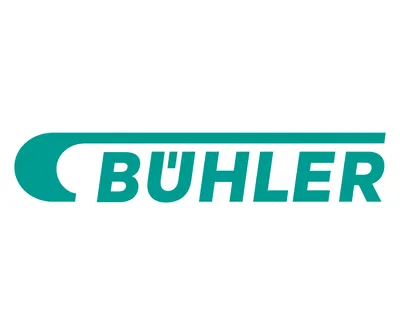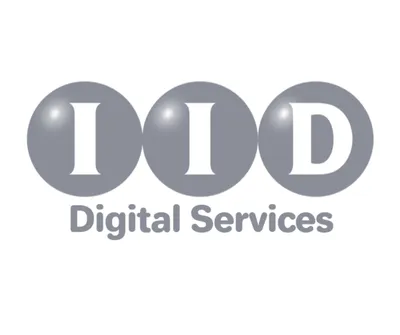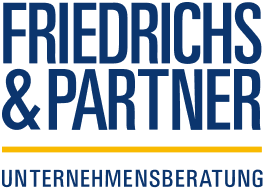We spoke with leaders from Canada, Switzerland and Greece to explore how companies are navigating the shift from legacy systems to digital-first operations. Their insights reveal the practical challenges, breakthroughs and lessons driving real transformation.

Mike Cindric, Managing Director at SigmaRPA, Canada, states the primary challenge is mindset rather than technology. 'Legacy companies typically respond to growth or capacity issues by hiring, whereas digital-first companies prioritise systems, tools and automation before considering personnel. Although the triggers, such as missed deadlines, overworked staff and increasing workloads, are consistent, the approach differs significantly.
Companies are often hindered by a reliance on familiar methods. When processes have always been executed in a particular way, alternative solutions are difficult to envision. Frequently, the limitation lies not in the system but in a lack of awareness of potential improvements.
Consequently, transitioning from legacy to digital-first requires abandoning the original mindset. In automation, the distinction between the “as-is” and “to-be” states is critical. By examining the current “as-is” process, we can collaboratively design a fundamentally different “to-be” state powered by automation and AI.
Digital transformation involves more than software upgrades; it demands rethinking and redesigning workflows, emphasising collaboration between machines, AI and humans rather than increasing headcount.'

Vidor Kapy, CIO at Bühler Group, Switzerland, explains that, unlike many companies that ignored incremental improvements for business processes, applications and data for decades, Bühler took action. 'Our former CEO and now Chair of the Board identified fragmented processes, systems and data as barriers to global collaboration at the beginning of the 21st century. Operating in 140 countries, this inconsistency held us back. Over the past 20 years, we've harmonised processes and standardised platforms. So now, everyone at Bühler “speaks the same language” and delivers consistent value.
Regarding the greatest challenge, many companies are trying to harmonise processes and standardise applications simultaneously with transitioning to SAP S/4HANA. Some plan to consolidate 30 to 50 ERP systems into a unified global process, investing hundreds of millions of Swiss francs in multi-year projects. Without the right expertise and resources, such large initiatives carry a high risk of failure.
My recommendation is to gradually replace outdated systems through an incremental approach rather than a quick overhaul. This method is more effective for an established company like Bühler and emphasises the importance of long-term planning over rapid change.'

Michael Andreadis, CEO at IID SA, Greece, notes that many enterprises face challenges transitioning from legacy systems to digital-first document solutions. 'These hurdles are real, but manageable with the right approach. Navigating regulatory complexity is a major challenge, as Greece’s digital governance (e.g., Law 4727/2020) requires electronic handling of public documents and compliance with EU standards like GDPR. Engaging legal experts early and designing compliant processes helps avoid costly errors. Cultural resistance is also strong—paper-based habits are deeply rooted, and employees may resist change. Overcoming this requires strong leadership, clear communication, targeted training, and involving staff in early successes to build a digital-first culture.
Legacy systems often lack compatibility with modern tools, so transitioning demands tailored solutions, phased implementation, and thorough data validation to ensure interoperability and protect data integrity. Finally, success depends on selecting the right partner with proven experience in Greece and deep knowledge of local and EU regulations to deliver secure, compliant solutions aligned with existing processes for a smooth transformation.'
How are emerging technologies like AI, cloud and automation reshaping operations and driving innovation?
Mike Cindric’s short answer to this is that they are changing the math. 'Operations are leaner because AI and automation enable more with fewer resources. Automation now includes digital workers and AI agents that act like team members, performing tasks, following logic and making decisions. It’s not just a tech expense, it’s workforce evolution. In the future, and in some organisations today, operations will be supported by human and digital resources collaborating toward a shared objective.
The model can be summarised as follows:
• People lead
• AI agents think
• Robots and digital workers execute
This new framework unlocks capacity, enabling employees to accomplish more with digital worker support. Revenue Per Employee (RPE)—total annual revenue divided by the number of full-time employees—is a key metric indicating efficiency. Most companies have an RPE between $300,000 and $500,000, while highly optimised ones exceed $1 million. AI and automation are driving this shift. Traditional hiring and tools like CRMs offer limited impact, but AI agents and digital workers fundamentally change the dynamic. They boost revenue growth by improving speed, accuracy and output, especially in marketing, sales and service, while reducing operational demands on human resources. This allows a smaller workforce to handle more work, increasing RPE by raising both revenue and workforce efficiency.'

Vidor Kapy emphasises that at Bühler, they continuously monitor emerging technologies. 'We assess the customer value of every new technology - when blockchain gained traction, we did the same. Generative AI has been a top focus for two years, building on our long-standing use of machine learning and deep learning. For example, our sorting machine uses deep learning and cameras to detect and remove improperly sized rice kernels in real time. With the rise of generative AI, we developed a comprehensive AI strategy focused on two areas, supported by strong data governance, architecture and infrastructure:
- Leveraging AI to optimise internal business processes
- Applying AI to improve customer solutions
While we've standardised processes and applications, many workflows remain manual. The next step is targeted automation using technologies like agentic AI. An unmanaged genAI (e. g. Copilot) rollout would cost 5–10 million Swiss francs annually, saving just 30 minutes per employee weekly, with no headcount change. This would result in a reduced EBIT. Instead, we focus on mature end-to-end processes with high volume and transactions, identify automation opportunities and pool resources cost-effectively outside Switzerland for the remaining manual work.
Our cloud-first strategy applies only when performance gains justify it; we avoid migrations if cloud costs exceed on-premise by 1.5 times. With data centre talent moving to providers like AWS and Google, and operations mostly in India, we're phasing out data centres. We also monitor geopolitical risks, as global cloud models face uncertainty amid deglobalisation and US-China tensions.'
Michael Andreadis remarks that emerging technologies like generative AI, cloud computing and automation are transforming enterprise operations and driving innovation. 'Businesses use these tools to increase efficiency, agility and competitiveness.
Artificial Intelligence (Generative AI) has advanced rapidly. Generative AI now creates content, writes code and analyses data, automating tasks once out of reach. This has driven fast adoption, with 65% of businesses globally using AI in operations. Companies report 6–10% average revenue growth from generative AI. Common applications include chatbots, AI-assisted design and data-driven decision-making.
Cloud Computing is the backbone of digital transformation, providing scalable, global access to advanced tools for fast modernisation. By 2026, 95% of new digital workloads will run on cloud platforms. Companies use cloud-based AI and analytics to accelerate product launches, scale data analysis and boost efficiency by up to 30%.
Automation and Hyper-automation - From RPA to AI-driven systems, automation is transforming operations by removing repetitive tasks, cutting errors and streamlining workflows. It frees employees for more strategic work. Across industries, it’s used for fraud detection, smart manufacturing and 24/7 customer support. By 2026, 80% of organisations plan to adopt hyper-automation, highlighting its strategic value.'
In your view, how much does company culture and leadership impact digital transformation, and what role does employee buy-in play?

'When I first entered this industry, terms like “digital transformation” and “bots” had negative connotations,' says Mike Cindric. 'The idea that machines might replace human jobs caused unease. For a time, only the bold or desperate seriously explored these technologies. ChatGPT changed everything; AI shifted from sci-fi to a practical tool almost overnight. Even skeptics started experimenting. I’ve always believed: AI won’t replace jobs, but people who use it will outperform those who don’t. Digital transformation must start with leadership as a strategic choice. Going digital-first means preparing the workforce, not just with tools, but with the right mindset.
Employees need to move from task execution to outcome leadership, learning to lead digital collaborators. As machines take over repetitive work, human value lies in decision-making, empathy, creativity and leadership.
Culture is vital to this transition. When employees understand their changing roles and feel empowered, not threatened, by technology, they engage fully. This engagement is where genuine transformation begins.'
According to Vidor Kapy, Bühler maintains a strong leadership culture supported by clearly defined values that form the foundation of all initiatives. 'We often emphasise that culture precedes strategy. Accordingly, when addressing digitalisation and AI, we prioritise leadership and culture. We focus on integrating these digital topics into our leadership framework and organisational culture, recognising that without such integration, meaningful impact on employees’ mindsets and daily practices cannot be achieved. To support this, we have implemented global learning and awareness sessions on AI, accessible to all employees. These live e-learning programs cover the fundamentals of AI and generative AI, the critical importance of data and the practical applications of AI both internally and for our customers. Our objective is to foster the appropriate mindsets and clear goals, thereby establishing a fertile environment to cultivate initial initiatives that will drive value creation.'

Michael Andreadis highlights that in his experience leading major digital transformation projects for public and private clients in Greece, one lesson is clear: technology alone doesn’t transform organisations, people do. 'Studies show over 70% of digital initiatives fail not because of poor technology but due to organisational culture and resistance to change. This aligns with what I’ve seen: success depends on a culture that embraces change and leaders who champion it.
Visionary leadership is key. As a leader, I set a clear digital vision and foster a supportive culture. Our role is to build a growth mindset and evolve corporate culture throughout the transformation. This vision can’t stay in the boardroom; it must be shared at all levels. When the team understands the “why” and “where” of the journey, they become more engaged.
Employee buy-in isn’t soft; it’s crucial. In Greece, digitalisation is survival, not a luxury, requiring fundamental work changes. People commit fully only when they trust leadership and see the value. Empowered employees who feel part of the mission embrace new tools and drive innovation. Ultimately, transformation succeeds through leaders, a culture of trust and innovation, and an engaged workforce.'
Summary
The journey from legacy systems to digital-first operations is complex but vital for enterprises to stay competitive and innovative. Success depends not just on technology but also on shifting mindsets, strong leadership and a culture that embraces change. By combining strategic planning with practical execution, organisations can unlock new efficiencies and growth. The future belongs to those who lead with vision and empower their people to thrive with technology.
The Kestria Technology Practice Group supports innovators and market leaders globally, providing insights into technology trends. Leveraging a strong network, it accelerates projects and connects clients with key innovations and leaders. Its commitment to top-tier tech talent is backed by extensive knowledge sharing with worldwide partners.


